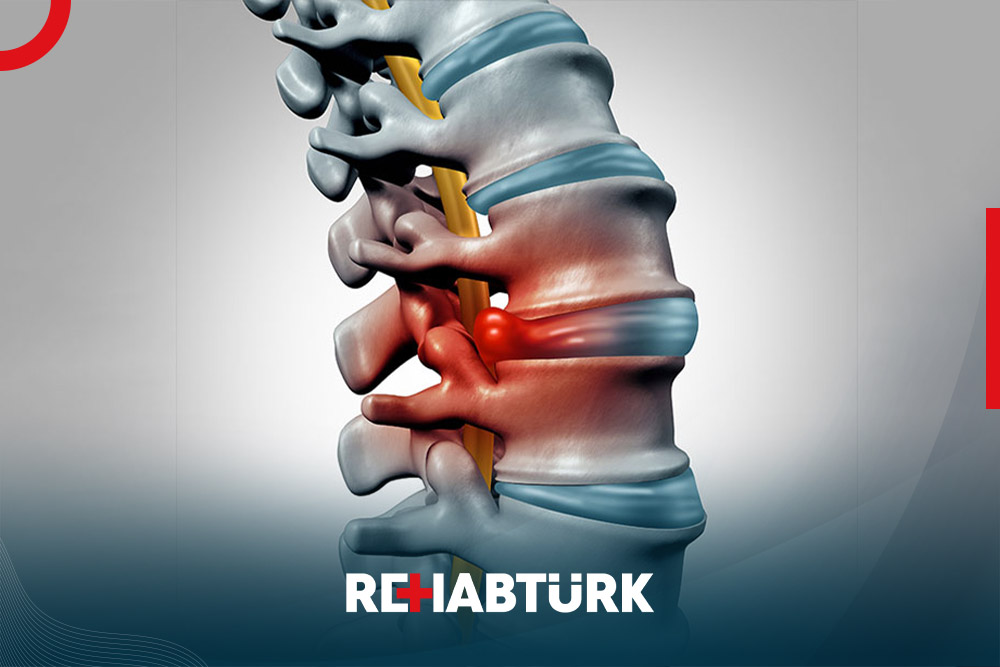Spinal Stenosis Surgery in Türkiye
Spinal stenosis surgery involves narrowing of the spinal canal or spinal canal stenosis, where the narrowing occurs when the bulging discs and arthritis cases come together.
What is Spinal Stenosis Surgery?
With aging, the spinal canal – located in the lower back – can narrow, leading to spinal stenosis. The gradual narrowing reduces the available space for the spinal cord and nerves.
In cases of mild spinal stenosis, there may be no pain. Spinal stenosis can lead to leg pain, numbness, and/or tingling. In advanced cases, weakness may also be present.
What Causes Spinal Stenosis?
Spinal stenosis occurs when the bulging discs, arthritis cases, and thick tissues “compress” the nerves passing through the spinal canal.
Common symptoms of spinal stenosis include leg pain and/or numbness and/or tingling, which is evident when standing or walking.

Walking may be hindered by leg pain and numbness, and the spinal column may lose its curvature and appear flat. As we tend to bend slightly when climbing a hill, symptoms may be less pronounced when walking uphill and worsen when walking downhill.
Rest is usually found when bending forward or sitting. When spinal stenosis becomes severe, symptoms may become continuous and lead to permanent nerve damage.
Spinal stenosis typically occurs in older adults, and arthritis and injuries can also cause spinal cord narrowing.
What are the treatment options for spinal stenosis?
Non-surgical medical treatment for spinal
- stenosis includes taking non-steroidal anti-inflammatory drugs (NSAIDs) for pain relief,
- receiving cortisone injections directly into the spine for short-term relief,
- and engaging in exercises and physical therapy focusing on strengthening the back and abdominal muscles as well as stretching.
If the above treatment options do not relieve pain and prevent you from engaging in daily activities, you should consider spinal surgery.
Surgical Treatment for Spinal Stenosis
The goal of spinal stenosis surgery is to permanently remove the pressure on the spinal canal.
Types of Spinal Surgery:
- Laminectomy: This is the most common type of surgery for this condition. A laminectomy involves removing the lamina, which is a part of the vertebra, to make room for the nerves. Some ligaments and bone spurs may also be removed. The surgery requires an incision in the back.
- Foraminotomy: The foramen is an area in the vertebrae where the nerve roots exit. The procedure involves widening this area to provide more space for the nerve roots.
- Spinal Fusion: This procedure is done in cases of instability and involves joining the bones with screws or bone grafts to provide stability to the spine. It can be combined with a laminectomy. The surgery takes several hours and can be performed in two ways:
- Bone is removed from another location in the body or obtained from a bone bank. This bone is used to create a bridge between the vertebrae and stimulates the growth of new bone.
- Metal implants, such as rods, hooks, wires, or screws, are used to fixate the vertebrae together until new bone grows between them.
What are the risks of spinal stenosis surgery? Is surgery safe?
Risks of spinal stenosis surgery include nerve damage, infection, bleeding, and scarring.
How do I prepare for spinal stenosis surgery?
To prepare for spinal surgery, quit smoking if you smoke, exercise regularly to improve healing rates, stop taking any unnecessary medications and herbal treatments that may interact with anesthesia or other medications, and ask the surgeon any questions you may have.
What happens after spinal stenosis surgery?
Pain may persist for a few days after surgery, necessitating the use of pain relievers and non-steroidal anti-inflammatory drugs to reduce swelling. However, your doctor is likely to prescribe mild exercises directly after spinal stenosis surgery to ensure that the back is not stiff and to reduce swelling. Hot baths and using warm compresses may help alleviate pain. Additionally, using an ice pack may help reduce pain before and after exercise.
What is the recovery period after surgery?
Full recovery after spinal stenosis surgery usually takes three months, possibly longer for spinal fusion, depending partly on the patient’s progress in rehabilitation and the severity of the surgery.
What is the rehabilitation after spinal stenosis surgery?
After spinal stenosis surgery, your doctor is likely to prescribe walking exercises and strengthening exercises for the lower back and abdomen to help stabilize the spine.
Spinal Stenosis Surgery in Türkiye?
The medical staff of surgical teams, doctors and consultants in REHABTÜRK can provide the best treatment options and free consultations – by striving to keep abreast of the latest medical technologies and methods.

